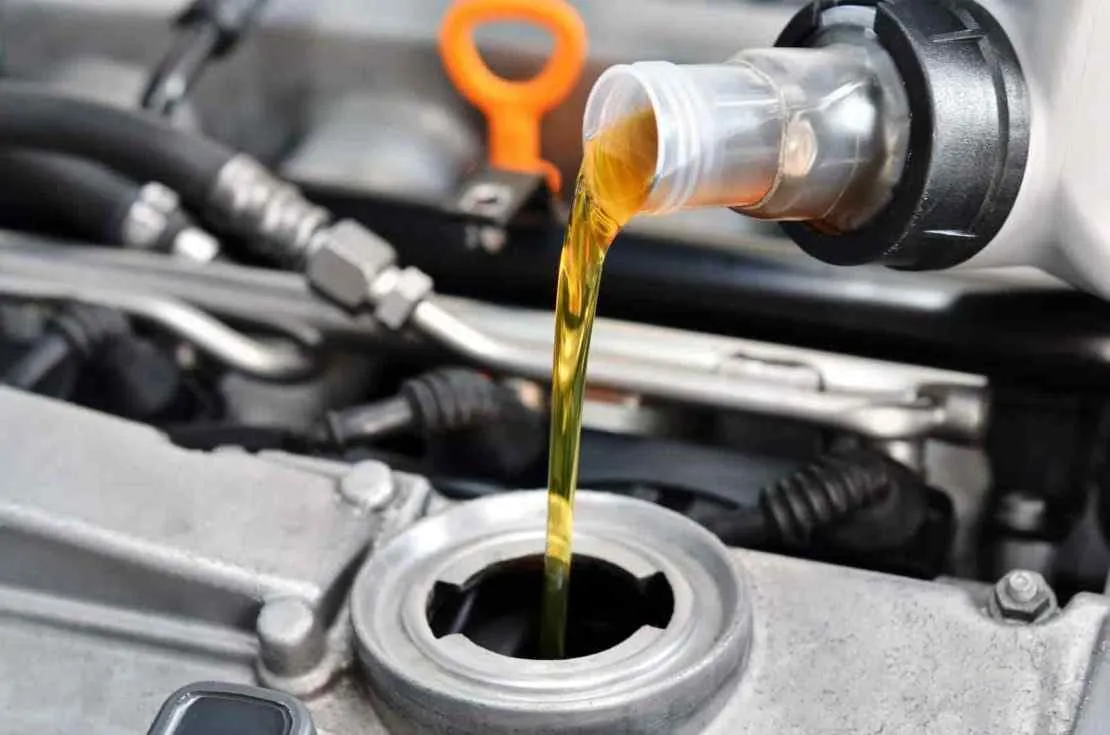A car gives you the freedom to commute anywhere you need to. However, its frequent use can lead to wear and tear, making it crucial to follow its preventive vehicle maintenance schedule efficiently. Occasionally, life can become hectic, and staying on top of the routine maintenance checklist can become burdensome. However, neglecting your car’s service needs can ultimately lead to costly consequences.
Continue reading to discover the ultimate car maintenance checklist, the significance of each part’s maintenance, and the recommended frequency for servicing each component to save time and money on your vehicle’s maintenance in the long term.
Short Term Checkups

Certain car parts and systems require regular maintenance checkups to maximize your vehicle’s life and performance which commonly include:
1. Air Filters
Foam air filters are highly effective in exhaust and automobile intake systems due to their exceptional dirt retention capacity. However, they need to be cleaned and replaced regularly. Accumulated dirt may contain harmful debris and particles that could obstruct your car’s air filter, resulting in increased emissions and a reduced lifespan for your engine. A clean filter is essential to prevent airflow restrictions that could strain your car’s engine, leading to decreased fuel efficiency.
It’s important to note that your engine requires more than 10,000 liters of oxygen to burn each liter of fuel, and a restricted air filter can diminish the oxygen supply, causing the engine to work harder and deteriorating its overall health.
2. Oil and Coolant Levels
To prevent mechanical breakdown, checking the oil level every month is crucial, especially before any longer road trips. You can get under the hood and inspect oil and coolant levels before turning on the engine, or five to 10 minutes after shutting it down.
To effectively check oil and coolant levels, locate the oil dipstick and coolant reservoir under the hood. Remove the dipstick, wipe it clean, then reinsert and remove it again to check the oil level against the marked indicators. The oil should appear clean and reach the ‘Full’ mark. For coolant, examine the reservoir and ensure the liquid reaches the recommended level lines. It’s important to use the correct type of oil and coolant specified for your vehicle, as using the wrong type can cause damage. Always perform these checks when the engine is cool to avoid injury from hot components. For more tips on car care and how to do proper maintenance for your car visit carcarereviews.net.
Engine oil is crucial to lubricate moving engine parts and prevent rust buildup. Note that rust and corrosion can lead to excessive parts wear. Conversely, insufficient coolant levels can result in airlocks within the coolant system, causing your engine to consume fuel at an accelerated rate and potentially leading to overheating. Inadequate coolant levels can also make driving challenging in both hot and sub-zero temperatures. If your car’s coolant is low, you may observe symptoms such as decreased fuel efficiency, reduced acceleration, and the temperature gauge approaching the red zone.
3. Parking Lights, Brake Lights, and Headlights
Your parking lights can be turned on and off by rotating the dial into the correct position. To avoid unnecessary fines and ensure the safety of fellow drivers on the road, you must inspect the functionality of all your car lights regularly. Neglecting to check your parking lights can result in your vehicle not meeting legal clearance requirements, potentially leading to fines and penalty points on your license.
Establish a monthly routine of turning on your headlights while parking in front of a flat, unobstructed surface. This will help you ensure that all headlights are operating correctly and properly aligned. Another monthly check should involve assessing your parking lights and signals. Enlist someone behind your vehicle as you examine the brakes to verify that the brake lights function as intended.
Seasonal Checkups

A seasonal checkup is directed by the seasons and is less rigorous than other methods. It may involve visually inspecting the windshield, replacing wipers, and checking battery performance. Let’s delve into this further.
1. Battery Performance Check
The battery is a considerable power reserve supplying large amounts of electrical current for the vehicle’s ignition, engine, and other electronic accessories. It provides the jolt of electricity necessary to power all the electrical components in your car.
Extreme temperatures affect the battery’s performance, so regular battery testing will ensure that the battery will perform when you need it to. It makes sense to test or replace your battery now to avoid the hassle of an unplanned failure in the winter. Note that cold weather during autumn is brutal on batteries, so checking the battery and charging system is wise. Keep the battery connections clean, tight, and corrosion-free.
2. Windshield
A windshield is a vital shield, safeguarding the vehicle’s occupants and interior from various external elements encountered on the road, such as dust, stones, debris, bugs, rain, wind, and more. You must keep the windshield clean, as dirt, deceased insects, or pollen buildup on the glass can obstruct your view and weaken the windshield’s structural integrity.
Stress cracks may also develop on the windscreen due to sudden and extreme temperature changes, especially during winter and summer, or loose stones or objects striking the glass. Delaying the repair of your windshield increases the risk of further damage. Cracks not only tend to expand but also compromise the overall strength of the windshield. Consider visiting vanisleglass.com to save yourself from potentially costly expenses in the future.
3. Tires, Suspension, Wheel Alignment
Car tires are the sole component maintaining direct contact with the road surface. They are susceptible to wear and tear, resulting in damage, deflation, and other issues. You must regularly check the air quality and pressure of the tires, the integrity of the shock absorbers, any joints or belts, and any other part of the suspension.
If you live where you might encounter snow or slippery roads, switch to winter or snow tires during the colder months. Winter tires are precisely engineered with tread patterns and compounds designed to remain pliable in cold weather. This unique design offers superior grip in snowy, slushy, and icy driving conditions, ensuring safer and more reliable performance during winter driving.
To check wheel alignment, notice how your car behaves when you drive straight. If it pulls to the left or right without you putting pressure on the steering wheel, it means that your vehicle needs to get in the garage for wheel alignment.
Long-term Checks

Long-term checkups are a series of scheduled maintenance conducted on a vehicle over an extended period of time. These checkups are intended to keep the car healthy in the long run, preventing severe issues before they become significant. Long-term checkups include the following:
1. Front and Rear Differential
The car differential gear is between actual wheels connected to the transmission by a driveshaft, controlling how your car makes a turn. It is a crucial component in front and rear axle assembly that allows you to turn safely when driving on a surface with varying traction.
Typically, in front or rear-wheel-drive vehicles, a single differential is present. However, in 4-wheel and all-wheel-drive cars, you’ll find both a front and rear differential and, in some cases, a center differential as well. You must keep the differential lubricated to prevent rough metal-to-metal contact that could lead to wear and tear of the differential. Get the differential fluid changed after every 30k to 60k miles driven by an expert technician.
2. Spark Plugs
The spark plugs are little fire-starters in your engine, igniting the air/fuel mixture to start your vehicle. Dysfunctional sparks can lead to prolonged cold-starting or misfires during acceleration, decreasing ignition power and optimal capacity. Make sure to replace the faulty spark plugs with a professional to improve your car’s horsepower and overall engine performance.
3. Serpentine Belt
A serpentine belt is a belt made of rubber that delivers power to the engine accessories, such as the alternator, power steering pump, and air conditioning. If the belt breaks, you could find yourself stranded on the roadside, waiting for a tow truck. You must replace the serpentine belt every 50,000 miles to prevent costly repairs in the future and the long run.
Endnote
Car maintenance can be overwhelming, but not considering it could lead to unwanted vehicle issues that you need to get fixed constantly. You must follow the above maintenance checklist to ensure your vehicle’s safety, fuel efficiency, and dependability. Enjoy driving your vehicle without worrying about major and minor safety issues by following the routine car maintenance discussed above.

